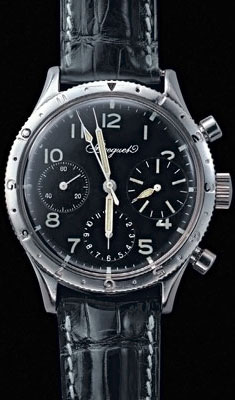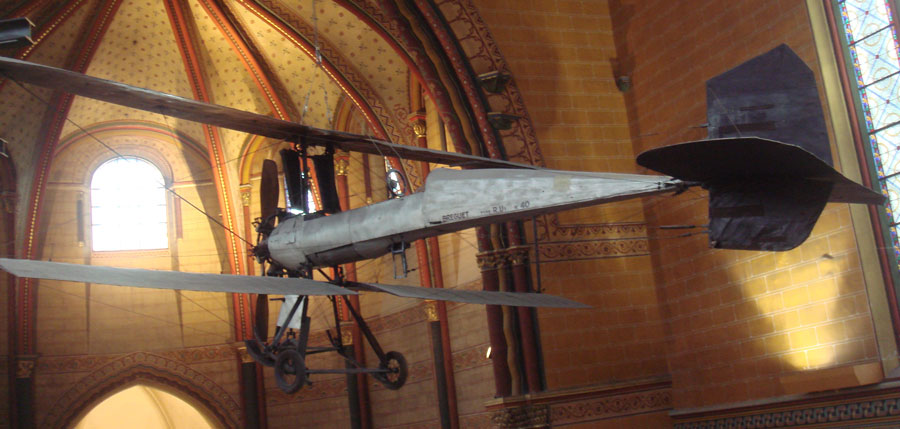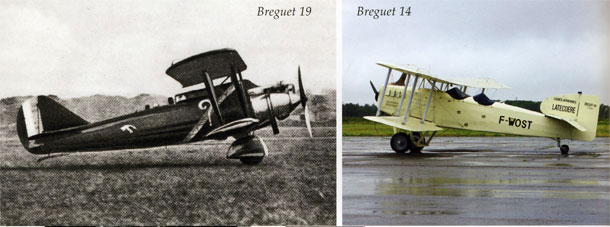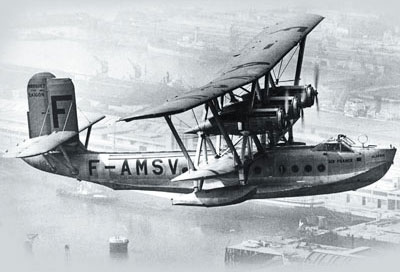Religion of Time and watch idols. Cult Watch “Type XX” – Breguet (Part 3)
Cult Watch “Type XX” - an unusual experiment for pilots
 In 1950, the watch company “Breguet”, famous for its elegant and original watches, presents the public an unusual product for the traditions and style of the company – the chronograph “Type XX”. The model was a typical military aviation watch, specific for a black dial of clear easy-readable design, luminescent numerals, and a large crown, which was comfortable to use even in pilot's leather gloves. In 1950, the watch company “Breguet”, famous for its elegant and original watches, presents the public an unusual product for the traditions and style of the company – the chronograph “Type XX”. The model was a typical military aviation watch, specific for a black dial of clear easy-readable design, luminescent numerals, and a large crown, which was comfortable to use even in pilot's leather gloves.
The model was quite incredible and untypical for the company – the experts in watchmaking even shrugged: “Where is elegant Breguet?”. It was clear that “Type XX” was a pure experiment. But still everybody, who was not indifferent to the watch industry, was wondering who the watch was designed for and why the company moved away from its traditional elegance to the practical militaristic functionality. After the release of the model, it was clear that the leaders were a little cautious, producing the watch “Breguet Type XX” of a very small edition. However, the year of 1954 was decisive in the fate of the collection, which was destined to become cult. That year the company received a large order from the French government for the supply of “Type XX” watches for the Air Force, Navy and CEV (the French flight test center). Thus, the watch “Type XX” became an official watch for the most important government institutions of the country. Breguet made the right decision with its experiment, putting a new milestone in the development of its style and technical components of its watches.
Since that time, the story and resounding success of one of the most famous models of the watch industry world - the cult watch “Type XX” from Breguet – have begun. The special status "stuck" to the model almost immediately: the age of watch appearance and "standing out" design from the traditional Breguet style, and technical design of the watch became determinant.
Thus, the basis of “Breguet Type XX” of 1954 was the movement “Valjoux Caliber 22” with manual winding, column wheel, monometallic balance with screws, Breguet spiral (one of the most unique technical achievements of the company) and, of course, except high technical characteristics, high aesthetic level of performance .The material for the watch manufacture was steel. The chronograph’s case is 38x14 mm. The case is framed by bezel, marked from 1 to 12, rotating in both directions. A 30-minute counter was located at the position of "3" hours.
2000 copies of the watch were released. The French Navy ordered a version with 15-minute counter, and the CEV - 500 copies with two counters and 50 copies with three counters. As the French government decided, the chronograph “Type XX”, “serving” in the French army, underwent service inspection each year. As a result, each year the back case was provided with the initial letters of the phrase “Fin de Garantie”, which was translated from French “the end of the warranty”, as well as the date of next service. Naturally, after several years of “service”, the back case of chronograph was covered with such "speaking" engravings, and that only added "worn" charm to the military chronograph. The outstanding chronograph was issued solely for the Army at that time - each chronograph was designed for a certain military man.
Maybe that's why after retiring many military men hardly parted with their "comrade" that witnessed many incidents of war, with many engravings, and why not, traces of their personal use. Thus, the military men have long reluctantly handed their watches to new recruits, etc. The pilot, retiring, rarely received the watch "for outstanding service". It is this fact why the watch was conferred the cult status, as in the watch market of 50s the watch “Breguet Type XX” was a rarity, and therefore, a titbit for collectors from all over the world...
Breguet watchmakers and aircrafts
.jpg) Many people studying the history of “Breguet” watch company often believe that in the twentieth century the owners of the company, namely the family of Breguet, have lost interest in the watch industry. The proponents of that hypothesis considered that a brilliant era of innovations and masterpiece inventions ended with the leadership of the grandson of company’s founder Louis Breguet. But in fact, the descendants of the legendary watchmaker preserved their innovative spirit and love for leadership. As history has shown, enthusiasm and diligence of the young generation of Breguet have just been revealed in other areas, particularly in engineering and aviation. Many people studying the history of “Breguet” watch company often believe that in the twentieth century the owners of the company, namely the family of Breguet, have lost interest in the watch industry. The proponents of that hypothesis considered that a brilliant era of innovations and masterpiece inventions ended with the leadership of the grandson of company’s founder Louis Breguet. But in fact, the descendants of the legendary watchmaker preserved their innovative spirit and love for leadership. As history has shown, enthusiasm and diligence of the young generation of Breguet have just been revealed in other areas, particularly in engineering and aviation.
One of the brightest innovators of the twentieth century was the grandgrand-grandson of Abraham-Louis - Louis-Charles Breguet. His name remains in the history of the world as the name of one of the most prominent and active members of the so-called "pioneer era" in the aviation industry. The aircraft burst into life of one of the most ingenious watchmakers’ descendant with the help of his father's entourage. The fact was that the father of Louis - Antoine Breguet, who played an important role in the implementation of Radio and Electricity in France, was a friend of founder of the telephone Alexander Graham Bell. Communicating with people of good thinking, Louis’ father did not concede anything to them: Antoine founded the French Society of Electricians, managed a scientific journal. In a word, he remained at the forefront of technological advances of his time.
But unlike his father, the son of Antoine, Louis Breguet, didn’t choose electricity, but the sky (here, by the way, it should be noted that later Louis became one of the founding fathers of the French Air Force and “Air France” company). Success comes to a young engineer in 1907, when Louis presents a hydroplane with flexible wings, designed by him. The device of the young engineer was the first prototype of helicopter in the world: it was the first pilot spacecraft capable of taking off vertically. Four years later, after the success of his invention, Louis founded the company of designing and manufacturing aircrafts – “Societe des Ateliers d'Aviation Louis Breguet”. The company achieves significant advances in the aircraft industry: its designs are in great demand among the relevant organizations.

During the First World War, the famous two-seat bomber reconnaissance, designed by Louis and called “Breguet XIV”, remained in France inventory and, as noted by some researchers, largely determined the victory of the Entente. The aluminum biplane “Breguet XIV” was released in an amount of 7,800 copies. Among other things, that model of  aircraft was piloted by Antoine de Saint-Exupery himself during the transportation of mail to the northern coast of France. In 1922, the descendant of watchmakers presented a new biplane “Breguet XIX” or “Br.19”, which set a huge amount of records in distance flights. The plane went down in history of aviation in 1930 forever, having made a transatlantic flight from east to west (en route Paris-New York). aircraft was piloted by Antoine de Saint-Exupery himself during the transportation of mail to the northern coast of France. In 1922, the descendant of watchmakers presented a new biplane “Breguet XIX” or “Br.19”, which set a huge amount of records in distance flights. The plane went down in history of aviation in 1930 forever, having made a transatlantic flight from east to west (en route Paris-New York).
In the same year, without giving the public time to recover from the previous work, the company introduced a new model of transport aircraft, which struck by its size – “Breguet XX” aircraft had a wingspan of 25.54 meters and could carry up to 20 passengers: an incredible figure for that time. The plane represented a four-engine biplane, and as if another embodiment of technological triumph, it was given a biblical name - Leviathan.
Nevertheless, despite the fact that the plane was unique equipment for its time and new technical achievement, a great step forward, its engine unit wasn’t very reliable, that was the reason that the plane did not go into mass production.
During that period, at the market of specialized aviation tools and chronographs, the company “Societe d'Horlogerie Breguet” was one of the most active and leading watch companies in the technical sense. Such reputation was provided by a special anti-shock system - "Parachute," which was invented by Breguet in 1790. Without such protective system, watches for pilots were virtually unthinkable. And soon watches with such system of protection "come" to the wider consumer. Thus, the first customers of the company in 1918 became the U.S. Air Force. and chronographs, the company “Societe d'Horlogerie Breguet” was one of the most active and leading watch companies in the technical sense. Such reputation was provided by a special anti-shock system - "Parachute," which was invented by Breguet in 1790. Without such protective system, watches for pilots were virtually unthinkable. And soon watches with such system of protection "come" to the wider consumer. Thus, the first customers of the company in 1918 became the U.S. Air Force.
Shortly thereafter, the company of Louis Breguet begins to use its "family" watches – models of aircraft watches “Type XI” and “Type XII”, which were built into the dashboard in the cockpit - from a functional point of view, those watches represented chronographs with minute counter and tachometer scale.
The names of those devices complied with references of "their" airplanes (starting from the label "type"), as originally chronographs were considered to be a part of the aircraft. It lasted almost until 1950: the device watches “Type XI” and “Type XII” took places on the cockpits of aircrafts in 15 countries.
However, time went on and many pilots began "feeling free", often fixing watches from dashboard to their hips or knees (that is why some of the major military flight watches are often called "knee-pads").
But creative pilots weren’t limited by that: often mechanical "helpers" stayed on the wrists of pilots even after landing in everyday life. True, fashion on such wearing didn’t last very long, being replaced by a rapid expansion of wristwatches, which simply "stormed" the watch market. The professional aviation watches also became very popular...
Military time - military watches - military romance
 Many experts believe that the Many experts believe that the definition of "cult watch" appeared first of all in connection with wars of the twentieth century and "watches-participants” in military operations. In this connection, there is a very remarkable fact that the definition of "cult watch" often manifests itself in relation to the military watches. Indeed, if today we follow the ratio of classic watches and various military models that were created for pilots, divers, shot-firers, special forces, etc., we’ll see that there are surprisingly much more specialized watches. Besides the fact that such watches are manufactured more, the attitude to military and special watches always and almost automatically give them a special and even collectible status. definition of "cult watch" appeared first of all in connection with wars of the twentieth century and "watches-participants” in military operations. In this connection, there is a very remarkable fact that the definition of "cult watch" often manifests itself in relation to the military watches. Indeed, if today we follow the ratio of classic watches and various military models that were created for pilots, divers, shot-firers, special forces, etc., we’ll see that there are surprisingly much more specialized watches. Besides the fact that such watches are manufactured more, the attitude to military and special watches always and almost automatically give them a special and even collectible status.
The answer of such special attitude to the military theme in watchmaking can be divided into three aspects. First, one of the notable features of the twentieth century, as already noted, was constant wars, and the mechanical watches during that period reached their popularity. Perhaps, that was only natural, since those devices had the desired qualities: necessity, reliability, functionality. Due to those qualities, the mechanical watches of the twentieth century were regarded as "special" devices required in a variety of serious and even extreme situations. And the more extreme the conditions were, especially the Navy and the Air Force, the more stringent requirements were presented to the watches-claimants to the title of "Official Chronometer".
The second reason, which came from the first, was as follows: the original military watches were mainly produced by limited editions, signed and engraved with the number of unit’s personnel, where the watches were used. And even after such limited editions were reproduced "in civilian life", yet a certain aura of exclusivity remained in them.
And the third reason, the simplest and weightiest one, according to which the watches could be considered as unique and iconic – the romance of military theme. Agree that for most men, even one mention of the flying chronograph of "that time" creates an incredible sense of belonging to something great and heroic.
All above-mentioned is not new. Still, not all the historical and military watches fit all three factors, and not all the watches can be referred to the concept of "cult watch"...
|


